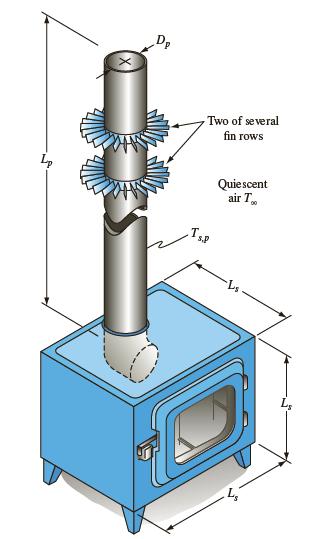Reconsider the fin design from Design Problem 2.1, but calculate the natural-convection heat transfer coefficient from information
Question:
Reconsider the fin design from Design Problem 2.1, but calculate the natural-convection heat transfer coefficient from information presented in this chapter. As shown in the schematic diagram, the invention envisions several flat fins of 6-cm height in a staged arrangement attached circumferentially along the exhaust stack. Explain why the inventor did not provide a continuous fin from the top of the stove to the ceiling. Also calculate the amount of heat that is recouped by the attachment of the fins, assuming that the stove operates eight hours per day. Then calculate the cost of the material that you have selected for the fin and, assuming that the manufacturing cost is approximately the same as the cost of material, estimate the value in dollars per kilowatt hour of the heat recovered from this enhancement structure. Taking into account the cost of manufacturing the circumferential fins, would a simple flat fin that is stamped from sheet metal be cost-effective?
Data from in Problem 2.1
A plane wall, 7.5 cm thick, generates heat internally at the rate of 105 W/m3. One side of the wall is insulated, and the other side is exposed to an environment at 90ºC. The convection heat transfer coefficient between the wall and the environment is 500 W/m2 K. If the thermal conductivity of the wall is 12 W/m K, calculate the maximum temperature in the wall.
Step by Step Answer:

Principles Of Heat Transfer
ISBN: 9781305387102
8th Edition
Authors: Frank Kreith, Raj M. Manglik, Mark S. Bohn





